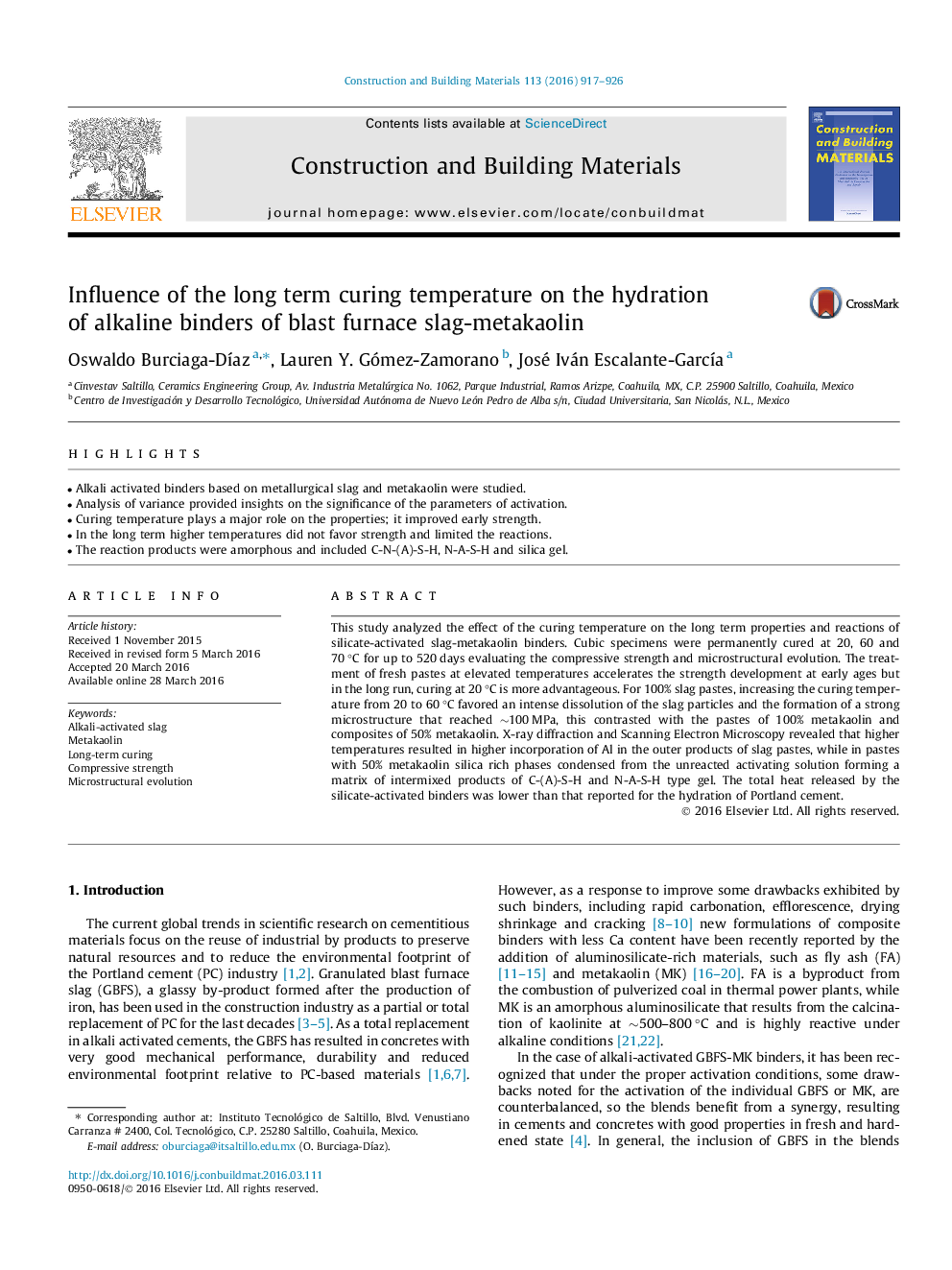| Article ID | Journal | Published Year | Pages | File Type |
|---|---|---|---|---|
| 256222 | Construction and Building Materials | 2016 | 10 Pages |
•Alkali activated binders based on metallurgical slag and metakaolin were studied.•Analysis of variance provided insights on the significance of the parameters of activation.•Curing temperature plays a major role on the properties; it improved early strength.•In the long term higher temperatures did not favor strength and limited the reactions.•The reaction products were amorphous and included C-N-(A)-S-H, N-A-S-H and silica gel.
This study analyzed the effect of the curing temperature on the long term properties and reactions of silicate-activated slag-metakaolin binders. Cubic specimens were permanently cured at 20, 60 and 70 °C for up to 520 days evaluating the compressive strength and microstructural evolution. The treatment of fresh pastes at elevated temperatures accelerates the strength development at early ages but in the long run, curing at 20 °C is more advantageous. For 100% slag pastes, increasing the curing temperature from 20 to 60 °C favored an intense dissolution of the slag particles and the formation of a strong microstructure that reached ∼100 MPa, this contrasted with the pastes of 100% metakaolin and composites of 50% metakaolin. X-ray diffraction and Scanning Electron Microscopy revealed that higher temperatures resulted in higher incorporation of Al in the outer products of slag pastes, while in pastes with 50% metakaolin silica rich phases condensed from the unreacted activating solution forming a matrix of intermixed products of C-(A)-S-H and N-A-S-H type gel. The total heat released by the silicate-activated binders was lower than that reported for the hydration of Portland cement.
